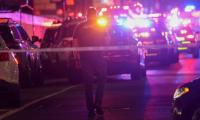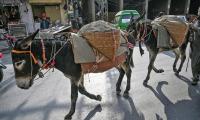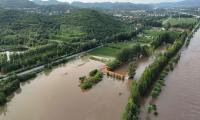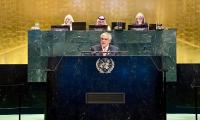Pakistan’s nuclear tests conducted on May 28, 1998, were a technological feat by all accounts. I have heard edifying stories from nuclear scientists who were involved in the process. They recount how anxious they were before undertaking the exercise and how thrilled they were after having accomplished the momentous task.
While we had acquired the capability of making nuclear weapons as long ago as 1984-85, we had abstained from overtly testing our capability till May 28, 1998. Thus there was great trepidation in the nuclear establishment when the final step was taken. The fact that it worked and the tests delivered a positive result is a tribute to all the scientists and engineers who were involved in this great national enterprise.
The largely untold part of the story – the political decision to undertake the nuclear tests – is nearly as equal in its drama as the technical achievement of conducting the tests. Back then, I was in the Foreign Office, which was called upon to recommend to the political leadership whether or not to test. We went into action immediately after the Indian nuclear tests on May 11. First, we ascertained that the Pakistan Atomic Energy Commission – responsible for the nuclear programme – would be able to conduct the tests when called upon to do so. As I recall, we were told that they required about two weeks to be ready for the necessary action. This also gave us time to ponder, assess and decide whether it should be done.
Our second area of focus was to monitor the international reaction to the Indian tests, as India was not a designated nuclear weapon state under the Nuclear Non-Proliferation Treaty (NPT) and had violated the international nuclear regime. All the territorial desks in the Foreign Office as well as all our missions abroad kept a close watch on reactions in the world community to the Indian tests. Every day, till late into the night, we would tabulate the reactions and responses of various countries, especially the P-5 members of the Security Council, Western European countries, Japan, Australia and Canada.
Third, we kept the government informed about our opinion on whether we should test or not. This was based on the grave security threat posed to Pakistan by the Indian action on the one hand and the damaging effects of likely sanctions which were certain to be imposed upon us if we undertook the tests. The finance ministry was mandated to study the negative impact of the sanctions. The Defence Committee of the Cabinet (DCC) met on May 13 – two days after the Indian nuclear tests – and could not reach a consensus on conducting the tests.
Internally, we had daily debates at senior levels on the advisability or otherwise of conducting nuclear tests. The politico-military logic of the situation seemed to favour the idea of testing, especially as the international reaction to the Indian tests was quite muted. There were of course calls for the imposition of sanctions on India, but not of an order that would have been unsustainable for India. On the other hand, the Indian tests had totally destroyed the military balance between India and Pakistan, and had in fact drastically altered the geo-strategic equation of the region. This could only be corrected by Pakistan’s nuclear tests.
But the other view was that Pakistan had already established a strategic balance by acquiring the capability of weaponisation. The imposition of the Pressler Amendment by the US in October 1990 was ample proof of this capability and the Indians knew it better than anybody else. In fact this factor, according to observers, had obliged India from not attacking Pakistan on at least two occasions – in 1987 and 1990.
Conducting overt tests would draw the ire of the international community much more fiercely than was the case for India for a whole variety of reasons (an important one being the fact that the West was leery of a Muslim country acquiring nuclear weapons), which Pakistan would not be able to deal with. Its economic condition was precarious and heavy additional sanctions could cripple the economy for years to come. Not testing would win Pakistan many incentives and benefits that would bolster the economy considerably.
In the Foreign Office, eventually there was greater support for testing, but there were a number of those who were opposed to it. Meanwhile, the pressure from Western countries to dissuade Pakistan from testing was immense. The US was particularly insistent in this regard. The then US president, Bill Clinton, called the then PM Nawaz Sharif several times to urge him to exhibit restraint as far as conducting nuclear tests were concerned. There were many special envoys from the US and European countries bringing messages of restraint from their governments. Of course, the inducements offered were not up to our expectations.
Pakistan kept weighing all its options till May 25. Two things happened after that date. On the night of May 26, information was received, albeit unverified, that Indians had lined up fighter jets near Amritsar to launch a pre-emptive strike against a Pakistani nuclear facility and that an attack was imminent by 4.30am on May 27.
On that fateful night of May 26, the Foreign Office directed its ambassadors in all major capitals to urgently convey news of the imminent danger to their governments and call upon them to exercise their influence to stop such an attack from taking place. The ambassadors of these countries in Islamabad were woken in the middle of the night and called to the Foreign Office to convey the same message to their respective headquarters. As dawn broke, the apprehended attack did not take place. Either our timely action had the desired effect or it might well have been a false alarm. Be it as it may, it sensitised our leadership to the grave security threat that Pakistan now faced.
Second, it is likely that our technical side had made all its preparations by that date and had conveyed its readiness to the leadership to conduct the tests. The mood in the Foreign Office on the morning of May 27 was very different from the preceding two or three weeks. A feeling of inevitability pervaded the corridors. It was evident that we were going ahead with the tests. This finally happened on the afternoon of May 28.
Thus, contrary to the impression later created both inside and particularly outside the country, Pakistan did not rush headlong into the decision of conducting nuclear tests. It carefully weighed all the aspects of such an action and agonised over the decision. It eventually reached the determination that it was in our best national interest to do so when a perceived security threat literally loomed on the horizon, and the country was technically ready to take the action. I have narrated this story as it is worth telling, especially after so many years, lest it may not be told at all.
The writer is the executive director of the Center for International Strategic Studies.
Email: sarwarnaqvi@yahoo.com
Palestinians gather to receive food from a charity kitchen, amid a hunger crisis, in Gaza City on July 23, 2025. —...
Taliban spokesman Zabiullah Mujahid participates in a press conference at the government media and information center...
Screengrab of viral video shows tribal members carrying out “honour killing” at unknown location in Balochistan....
An employee of an Exchange Bank counts one hundred US dollar notes during a photo opportunity at the bank's...
An employee counts Pakistani rupee notes at a bank in Peshawar, on August 22, 2023. — ReutersPakistan has posted a...
A graphical poster of ‘Bunyad’, an Urdu-language journal published by the LUMS. — Bunyad LUMHS website/FileA...







